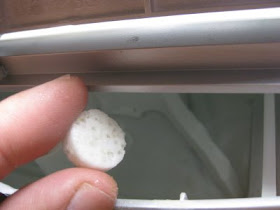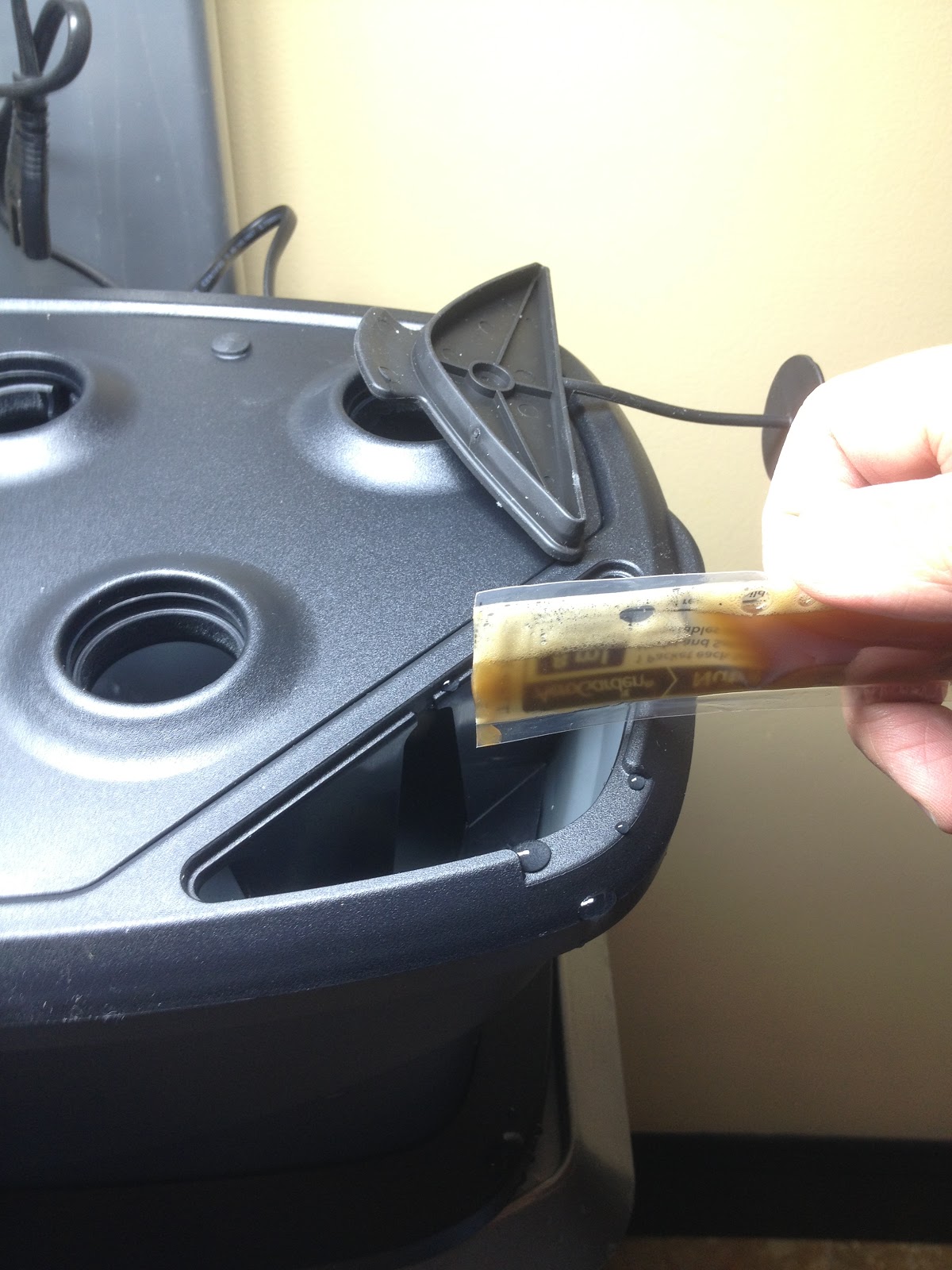Back in the old days, some of you might recall that Aerogarden used to include white tablets in with their new seed pods. These tablets usually came in a small zip-lock bag. The tablets appeared to be made of salt (they were actually made of a combination of mineral salts, seaweed, a pH balancing tap water buffer, and a binder to hold the tablet together).
To use them, you just plopped two pill into the water. Plop, plop, fizz, fizz.
The problem with these tablets was that because they were moist, over time, these tablets would burst out of their zip-lock bags and seep into the outer box and generally cause a mess. Worse, over time your water would be filled with gunk, which could even clog up the Aerogarden pumps.
The good engineers at Aerogrow then came up with little plastic packets, similar to soy sauce or duck sauce packets you get at Chinese takeout restaurants.
These worked great, but it rubbed me the wrong way how wasteful this solution was--the last thing our landfills need is more plastic. Worse, if you kept the packet more than a few months, they would dry out, leaving you with a pack of dried salt and brown gunk.
I should say these were salvageable. Here's what I did with dried out Aerogarden nutrient packets: just cut them into a few pieces with scissors, put them in a cup of water, and stir. The salts and nutrients will dissolve into water and be just as good as new. But yes, this was a pain.
The latest, and so far the best, solution now is that Aerogarden provides bottles of liquid plant food. Here's what the container looks like from Aerogarden's catalog (next to a fictional set of strawberry crowns).
Aerogarden also sells nutrients in bulk. Here's a one quart container
The container will last for more than 100 feedings.While they used to provide different formulations for different types of plants, nowadays they provide pretty much the same nutrients for all plants.
Whether they're in tablet, packet, or bottle form, AeroGarden's own nutrients are made up of a number of mineral salts, including potassium nitrate, calcium nitrate, mono potassium phosphate, ammonium nitrate, and magnesium sulfate. While this sounds like a chemical concoction, all the ingredients occur naturally and are balanced in just the right amounts to help plants thrive (some of these ingredients are also found in multi-vitamins). You can actually use it as nutrients for your Aerogarden, or if you dilute it with water, you can use it for your houseplants or outdoor garden as well.
At 29 cents a feeding, the nutrient is kind of pricey, though. A question I hear a lot is, are there alternatives to the Aerogarden nutrients?
The first thing to understand is--normal plant food (like Miracle Gro's traditional blue crystal plant food for houseplants) is NOT a suitable substitute for Aerogarden's liquid plant food because this kind of food is designed to work with soil--just putting it in water won't provide the pH balance or micronutrients your plants need. You do need to go with a solution designed specifically for hydroponics.


Have you had success with alternatives to Aerogarden's nutrients? Share them here!



So, I can't substitute Miracle Gro Indoor Liquid Plant food, right?
ReplyDeleteThe aerogarden liquid is also messy and leaves a cakey residue around the cap. What I do is use a syringe labeled with measurement amounts, so that I don't make a mess. When the liquid spills, it gets everywhere. Plus it's hard to know if I overdid the liquid or not. I would prefer the dry material - that's pretty smart. This was a great read!
ReplyDeleteI just went to add some aero garden plant food and found that the bottle was full of mold. It was growing out from the inside of the lid and I could see something floating in the liquid. Yuck! I’ve only had it for a few months and kept it closed except when adding to the aero garden. I’m definitely planning to go with a cheaper alternative next time.
ReplyDeleteYour links are out of date, but thank you for the information.
ReplyDeleteThe little plastic bothers you but the larger plastic does not? Huh? The plastic is destroying the environment.
ReplyDelete